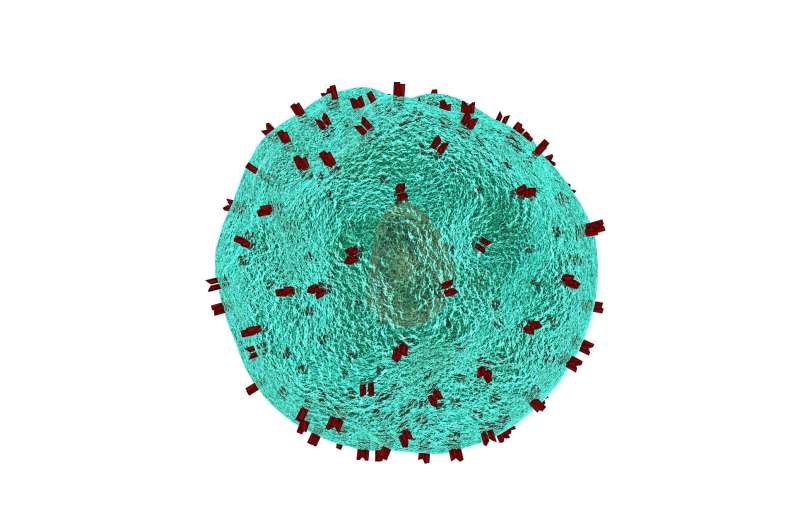Credit: CC0 Public Domain
Immune system T-cells are more able to destroy skin cancer cells when a T-cell regulator called SLAMF6 is missing, a new study in eLife shows.
Immunotherapies, which boost the immune system's ability to destroy cancer cells, have become an important type of cancer treatment, but they are only successful for about half of patients treated with them. The new study in mice suggests that immunotherapies that turn off SLAMF6 might add an option that could be used alone or in combination with other immunotherapies to treat cancer more effectively.
"There is a real need to find new targets for immunotherapies," says lead author Emma Hajaj, an MD-Ph.D. candidate at the Sharett Institute of Oncology at Hadassah Hebrew University Hospital, Jerusalem, Israel. "We thought that SLAMF6, which is a receptor found on all T-cells, was a good candidate for immunotherapy, but more thorough research was needed to confirm this."
To investigate this further, Hajaj and her colleagues created a mouse model that enabled the team to understand the role of SLAMF6 in melanoma treatment. They found that tumours in mice treated with SLAMF6-lacking T-cells shrunk faster and stayed smaller than tumours in mice treated with typical T-cells.
Additionally, they saw that the expression of a gene called LAG-3 increased in the SLAMF6-lacking cells, possibly to make up for the loss of the regulator. Combining SLAMF6-lacking T-cells with an antibody that blocks LAG-3 also increased their tumour-shrinking effect.
"The results from our study show that the absence of SLAMF6 unleashes powerful anti-tumour T-cells, which extended survival in our mouse model," explains senior author Michal Lotem, Head of the Center for Melanoma and Cancer Immunotherapy at Hadassah Hebrew University Hospital. "These findings may have important implications for cancer immunotherapy and could lead to the development of new melanoma treatments that turn off SLAMF6."
More information: Emma Hajaj et al, SLAMF6 deficiency augments tumor killing and skews towards an effector phenotype revealing it as a novel T cell checkpoint, eLife (2020). DOI: 10.7554/eLife.52539
Journal information: eLife
Provided by eLife
























